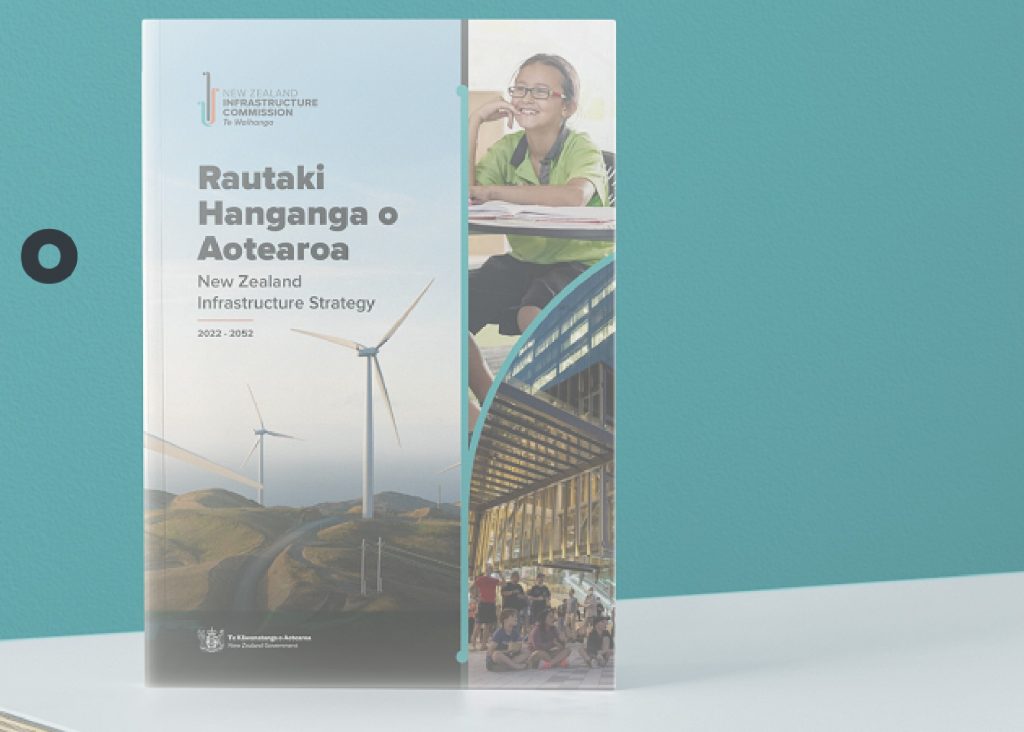While Infrastructure New Zealand is glad to see He Whakakaupapa mō Te Hanganga o Aotearoa – the Infrastructure Action Plan released alongside Budget 2023, Policy Advisor Martina Moroney says most of its initiatives are already underway

Infrastructure New Zealand wants to see actual funded projects, rather than the accumulation of plans, reviews, conversations and initiatives already underway that the Infrastructure Action Plan provides.
The Plan, which represents the second part of the Government’s response to Rautaki Hanganga o Aotearoa – the first New Zealand Infrastructure Strategy has four focus areas. These include:
• strengthened partnerships with Māori, local government, and the private sector
• building capacity and capability in the sector
• ensuring that our infrastructure rebuild and new build is resilient in the face of climate change, natural disasters, and increasing extreme weather events
• improvements to infrastructure decision making and governance.
Within these, the large majority (74 per cent) of the Plan’s 331 actions are already underway within the Government’s current work programme.
There are, however, a few significant new actions included in the Plan.
• Work to be undertaken by Treasury alongside Te Waihanga – the New Zealand Infrastructure Commission to develop the infrastructure priority list, with planning and development across the next three years.
• Treasury to also review the Better Business Case framework and associated investment planning products. They plan to complete this review by the end of 2025.
• Te Waihanga to build a State of Play of the ways the government engages with iwi and Māori on infrastructure projects. Te Waihanga plans to release this State of Play in 2024.
• Te Waihanga to work with the Public Service Commission to ensure development of leaders is aligned across the public sector, including on the option of a major projects leadership programme. Options will be assessed in 2023 and next steps announced by 2024.
• The expectation is that Rau Paenga’s initial portfolio of projects will be finalised in 2023.
The Treasury will also continue to develop guidance on investment planning and asset management to support agencies to build their capability to plan and deliver investments.
To address recovery and resilience, The Department of Prime Minister and Cabinet will also commence public consultation in 2023 on the adequacy of New Zealand’s current regulatory approach to delivering resilient critical infrastructure. The Treasury is also undertaking work to integrate consideration of climate risks and future adaptation into the guidance it publishes on investment management and state sector performance. Updated guidance will be developed by 2025.
It is encouraging to also see planned progress in 2023 for the Infrastructure Funding and Financing System project under the Government’s Urban Growth Agenda. There is significant opportunity to better utilise our existing alternative funding and financing tools, so progress in this area is a positive step forward. Further detail on the establishment and next steps for Rau Paenga to support government infrastructure delivery is also a positive inclusion.
Whilst we are encouraged by the mention of partnership with the private sector included in the Plan, it is surprising to see limited new initiatives considering improvements to the use of private capital and the private sector’s delivery capacity. The Infrastructure Strategy itself reflects that there is an opportunity to further engage with the private sector in the procurement phase and it is surprising that the Plan lacks this focus.
More than half of the initiatives are expected to be complete in the next three years. Investments through Budget 2023, including the National Resilience Plan, will support the implementation of the Action Plan. Te Waihanga will then monitor and report on progress towards these actions and the objectives of the Strategy and continue to prepare updated infrastructure strategies every five years.
While we welcome the Government’s focus on the Infrastructure Strategy’s recommendations, and commitment to their significant work programme underway, the urgency of New Zealand’s infrastructure deficit, and the importance of Te Waihanga’s work demands more substantive and immediate action than this Plan provides. We encourage the Government to commit to bold progress that enables Te Waihanga to act as an independent steward of our infrastructure system, and to meet that independent stewardship with a commitment to actioning their recommendations.
Unfortunately, this Plan does very little to further advance the state of the infrastructure system past the Government’s initial response to the Strategy. INZ will continue to advocate for the improved use of private sector’s capital, expertise and delivery capacity to ensure the infrastructure outcomes that New Zealanders deserve are delivered.







